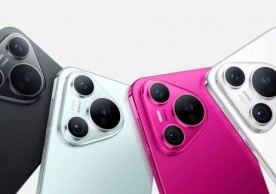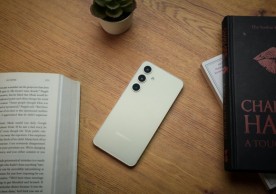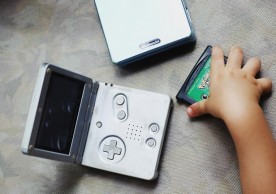New Technology Helps Scientists Test Blood With A Smartphone
New Technology Helps Scientists Test Blood With A Smartphone
Mary Cris BalancioInnovations are getting smarter and bolder as time passes by. One day you just find this product and are surprised that such thing is possible. One of these products that might surprise the public is the latest device that enables a smartphone to be able to test a user's blood.
Researchers for some time have been developing apps or are collaborating with app makers to help them improve their equipment and their labs. Some are aiming for a future where one day diseases can be detected using a smartphone that is equipped with a certain app or is built with a certain feature that enables it to do so.
Nowadays, mobile phones have evolved from a simple device used for communicating to a gadget used for taking photos, playing games and searching through the Internet. And as time passes by, more features and applications are being invented and developed. And most researchers have been seeing it as a means to improve their tools.
It is known that a common medical test involves measuring levels of red and white blood cells in the human's blood. The standard methods for counting and classifying blood cells for now are time consuming, extensive and a bit complicated. That is why researchers have been constantly looking out for a potential device to improve and/or shorten this process.
And scientists did manage to develop a lantern-size device that can measure blood cell levels using magnetic levitation. This invention according to them can be combined with smartphones to conduct a medical test affordably and easily. The specimen is seen by the user with the help of mirrors and a LED light. The entire kit is about 6.3 x 4 x 7.9 inches or 16 x 10 x 20.5 centimetres in diameter.
Meanwhile, the blood samples collected are laced with a chemical known as gadobutrol, which is slightly attracted to magnetic fields. These samples are then placed between two long thin magnets that is as small as a toothpick, and whatever is within it buoys up the magnetic field.
After that, cells then float into different heights within the magnetic field, depending on their density and type. This method is where the device easily separates the red and white blood cells, and this can be done in as fast as 15 minutes.
According to co-author of research Utkan Demirci, who is also a bio-engineer at Stanford University, they have developed a new method to measure cell densities accurately at a single-cell level and separate them based on their weight and magnetic forces.
Demirci adds that the i-LEV device they have discovered forgoes the usual lengthy, complicated and expensive process that latest devices designed to work with a smartphone currently have. Aside from their i-LEV device being a lot easier and simpler to use, the researchers noted that it could also do more. They said that the invention can also help monitor the effects of drugs on cells for research applications.
The i-LEV device is patented according to Demirci; however, he stated that it won't be seen at the clinic any time soon. Because like most technologies, it will take years to develop it, improve it and make it into a more commercialised version to be put on the shelves.
most read
related stories
more stories from Mobile
-
iPhone and Pixel Reunite at Coachella in #BestPhonesForever Ad
Join the reunion of iPhone and Pixel at Coachella in the #BestPhonesForever ad campaign. Experience the excitement!
ernest hamilton -
Huawei Launches New Pura 70 Smartphone Amid Chip Scrutiny, Challenging Apple with Fresh Lineup in China
Huawei challenges Apple with the new Pura 70 amid chip scrutiny. Explore the details of their fresh lineup in China.
ernest hamilton -
Google Merges Android and Hardware Teams: Emphasizing AI Integration
Learn about Google's bold move in merging its Android and Hardware teams, emphasizing AI integration. Read more!
ernest hamilton -
Galaxy A35 5G: Samsung's New Budget Phone Delivers Quality without Compromise
Explore Samsung's latest budget offering, the Galaxy A35 5G! Discover how this new phone delivers quality without compromise.
ernest hamilton -
Delta: The iOS Game Boy Emulator Thats Here to Stay (Probably)
Explore the world of classic gaming with Delta, the iOS Game Boy emulator that's here to stay, but still probable. Dive into nostalgia now!
ernest hamilton -
Samsung's April 2024 Security Patch Now Available for Select Galaxy Devices
Stay secure with Samsung's April 2024 Security Patch, now available for select Galaxy devices. Update yours today!
ernest hamilton -
iOS 17.5 Beta 2: Exciting New Features Coming Soon to Your iPhone
Get a sneak peek at iOS 17.5 Beta 2! Explore the exciting new features coming soon to your iPhone.
ernest hamilton -
Google's Next Foldable, Rumored to be the 'Pixel 9 Pro Fold', Expected to Boast Flagship Specs
Explore rumors surrounding Google's anticipated 'Pixel 9 Pro Fold', speculated to feature flagship specifications in the next foldable release
ernest hamilton












